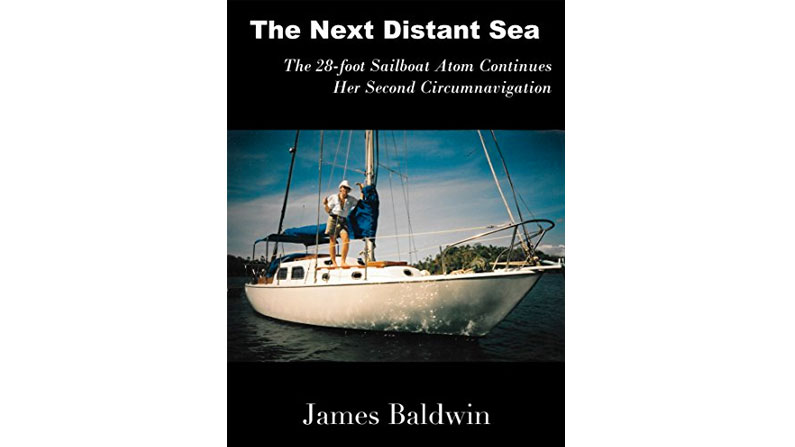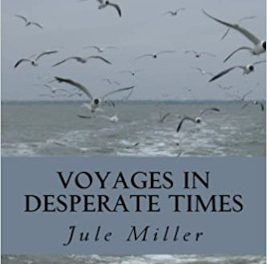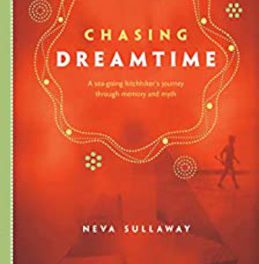 This is the latest of James Baldwin’s books chronicling his life and travels aboard Atom, his dependable Pearson Triton. Baldwin’s narrative begins in 1992, with Baldwin living aboard Atom in Hong Kong, midway through his second circumnavigation begun “four years earlier in Ft. Lauderdale.” The book covers Baldwin’s voyage from Hong Kong to South Africa by way of the Philippines, the Spice Islands, Mauritius, and Madagascar over several years.
This is the latest of James Baldwin’s books chronicling his life and travels aboard Atom, his dependable Pearson Triton. Baldwin’s narrative begins in 1992, with Baldwin living aboard Atom in Hong Kong, midway through his second circumnavigation begun “four years earlier in Ft. Lauderdale.” The book covers Baldwin’s voyage from Hong Kong to South Africa by way of the Philippines, the Spice Islands, Mauritius, and Madagascar over several years.
For much of the sail Baldwin is accompanied by his friend, Theo, who crewing aboard Atom the year before, was “immediately…hooked on the cruising lifestyle.” Returning to Hong Kong after time spent in Europe earning enough to buy his own sloop, Theo selects Islander, a “28-foot…Taipan built in Hong Kong,” which he refits with Baldwin’s help. Islander and Atom then set out together for South Africa. Passing through the Philippines, and suffering from a mysterious malady doctors can find no cause for, Baldwin falls for a young Filipina named Margie on the island of Tacloban. Baldwin sails on, but loneliness soon gets the better of him and he returns to pursue the “lovely” Margie, who agrees to continue with him aboard Atom.
Baldwin is not, in the end, a literary sort prone to the kind of deep, nuanced reflection we find in Bjorn Larsson (From Cape Wrath to Finisterre), Adam Nicolson (Seamanship: A Voyage Along the Wild Coasts of the British Isles), or Kevin Patterson (The Water in Between). Nor is he one to follow on the heels of such well-loved raconteurs as Jack London and Joshua Slocum, or the rascally Tristan Jones.
Instead, Baldwin more or less falls into the tradition of the cruising narrative as practiced by sailors such as Harry Pidgeon, Herb Payson, Eric Hiscock, and the Pardeys, who, despite meeting with the occasional disaster or gale, appeal to the more staid adventurers among us. Their books tell of people and places along the way, and in the end these somewhat hurried and occasionally hum-drum accounts seem to end where they begin, or, rather, where the writer imagines the reader wishes them to–safe at home or in harbor again, psyches and lives more or less what they were when they set out. Not for this crew, nor for Baldwin, the sensational antics of Robert Manry (Tinkerbelle), the hard bitten courage of Vito Dumas (Alone Through the Roaring Forties), or the personal pathos of pelagic vagabonds such as Sterling Hayden (Wanderer)and Peter Nichols (Sea Change), who confront deep personal failures and faults at sea.
In the end, Baldwin, who like the Pardeys is not big on electronics or auxiliary power, trades in sensible cruising, and the sort of writing associated with that. He navigates both life and sea with the kind of cool self-assurance one might claim after bouncing luckily over an unseen reef. When, reaching South Africa, Margie grows “weary of” his “need to wander the world under sail,” he and she part with “No tears. No anger,” at least none that Baldwin, “outwardly stoic…but inwardly shaken,” is willing to share, with us or with her. Instead, he dons the Romantic solitary’s mantle, declaring there “were things [he] would not share, compromises [he] could not make,” his “melancholia…mixed…with a selfish relief” at once again being “alone and free.”
Two weeks later, when a letter arrives from Mei, a “past girlfriend [Baldwin] had left in Taiwan years before when [he] went back to sailing after [his] work contract had ended,” Margie seems easily forgotten. And when Mei, who had earlier proved herself “happy” sailing on a “small boat,” agrees to marry Baldwin after a brief visit together back in Detroit, he is more than happy to surrender his proud solitude, promising her a life ashore if she will “sail with [him] for a few more years.”
Despite Baldwin’s struggles at points with bad health and loneliness, he is not one of those voyagers who set out shrouded in doubt or in search of “solitude, deprivation, and danger,” as Alvah Simon does in North to the Night, in which Simon recounts spending four months alone on his boat in the frozen arctic. Baldwin’s passage is not a Quixotic quest. He is neither running from nor seeking some deep truth about himself; he is not bent toward mystical encounters with the natural world. A “minimalist by definition,” Baldwin is, rather, a familiar sort of adventurous free-spirit, possessed of some Gypsy bones, determined to live a life far removed from the “smoke-filled” Detroit factories he worked in as a young man.
That said, Baldwin betrays an almost humbling humility of sorts in his treatment of other single-handlers he meets who have dared things even he would not try. That he knows how to recognize and win the trust of such souls says much about his character, all of it good. And his compelling accounts of those who have made long distance voyages against the odds in simple or eccentric craft of their own are presented with astonishing force and clarity.
One such portrait is that of Alberto Torroba, who sails from Panama to the Philippines in a 15′ “canoe carved from a single tree,” using “methods like those employed by the ancient Polynesians.” After losing his handheld compass and his “sole chart of the Pacific…just four days out from the Galapagos Islands,” Torroba still manages to cross the Pacific successfully. Later, using nothing save a few hand tools, he builds a 26′ plywood and bamboo catamaran in which he and his new Philippine wife make “an incredible passage of over 1,000 miles from the southern Philippines and across the South China Sea” to Hong Kong, “with no navigational instruments aboard, not even a compass.” This and other profiles Baldwin presents are so fascinating they deserve book-length treatments of their own, and one hopes Baldwin might take on this task someday.
No voyage, and no boat, can be all things, and neither can any book. Like the seas and harbors Baldwin explores, The Next Distant Sea is shallower in some places, deeper in others; the holding ground can be suspect at times. But there is still much in this book to interest readers, whether blue water sailors or not, and it suffers less from comparisons to others of its sort, than from its own somewhat uneven accomplishments. It moves a bit too swiftly at times (as do many books of its ilk), but is otherwise mostly well-paced. Baldwin offers commentary and insight on history and culture, but his analyses tend toward the simplistic, devoid of subtler reckonings and sensibilities. Baldwin is, for instance, rightly aware of and angered by the racism he and Margie encounter in South Africa, but less conscious at other times of what some might consider subtler post-colonial complicities.
It remains a remarkable accomplishment to cross an ocean or complete a comparable passage in a small boat, alone or with a crew. And anyone who writes well enough ought to tell the https://crohnscolitislifestyle.com/buyvalium/ tale. Baldwin has accomplished both things in a respectable fashion. But a boat’s wake does not linger long upon the waves, and few are the books of any sort that last.
The Next Distant Sea held my attention, and will likely hold yours, but there is no denying it often comes up against a kind of solipsism not uncommon in such books. It is not, in the end, a literary work. It’s supposes no horizons we cannot see. Baldwin’s writing lacks the kind of gravitas and poetry the sea sometimes bestows. Nevertheless, The Next Distant Sea will likely satisfy those who don’t look between the meridians for metaphors. Still, my sense is that Baldwin has more in him than he has yet managed to get hold of in this book, and I’d chance reading his next book on the hope he eventually finds it.
The Next Distant Sea, by James Baldwin (Createspace, 2017; 350 pages)





